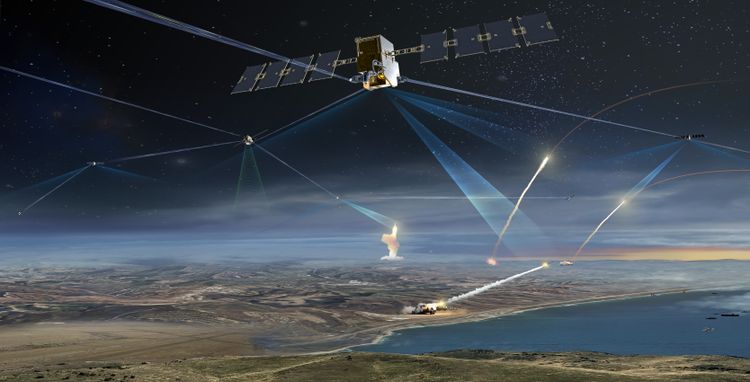INDIAN ARMED FORCES CHIEFS ON
OUR RELENTLESS AND FOCUSED PUBLISHING EFFORTS

SP Guide Publications puts forth a well compiled articulation of issues, pursuits and accomplishments of the Indian Army, over the years

I am confident that SP Guide Publications would continue to inform, inspire and influence.

My compliments to SP Guide Publications for informative and credible reportage on contemporary aerospace issues over the past six decades.
Northrop Grumman Completes Critical Design Review for the Space Development Agency's Tranche 1 Tracking Layer

Northrop Grumman Corporation recently completed its Critical Design Review (CDR) on a proliferated low-Earth orbit constellation of 16 missile tracking satellites for the Space Development Agency, clearing the way to begin production work on the space vehicles.
- The CDR maintained an accelerated pace and was completed within 13 months of the award announcement.
- The satellites are part of the Tranche 1 Tracking Layer (T1TRK) that will identify and track hypersonic weapons and advanced missiles from the earliest stages of launch through interception.
- Once in orbit, the satellites will operate in two of four low-Earth orbital planes, interconnected with Tranche 1 Transport Layer (T1TL) – another element of SDA’s Proliferated Warfighter Space Architecture (PWSA) designed as a high-speed, high-volume data transport network connecting U.S. forces around the globe.
Expert:
Candace Givens, vice president, overhead persistent infrared and geospatial systems, Northrop Grumman: “We are developing a more responsive, flexible and resilient space architecture to counter sophisticated threats. By passing this critical milestone on an accelerated timeline, we are closer to delivering critical missile defense and tracking technologies.”
Details on the PWSA:
Fourteen of the satellites for T1TRK will feature a wide field-of-view sensor, three optical communications terminals and a Ka-band payload for communications. Two satellites will feature a medium field-of-view infrared sensor to demonstrate a fire-control solution.
Northrop Grumman is a leading contractor providing both space vehicles and ground systems for SDA’s PWSA, a next-generation constellation in low-Earth orbit. The company continues to leverage this growing industry base of capable suppliers to support this critical mission. PWSA has two major lines of effort:
- The Tracking Layer: Focused on developing a global constellation of infrared missile warning and missile tracking satellites that integrate with the Transport Layer’s low-latency meshed communication network, enabling conventional and advanced missile tracking from proliferated low-Earth orbit.
- The Transport Layer: Designed to provide low-latency, high-volume data connectivity supporting U.S. military missions around the world.
To date, SDA has awarded Northrop Grumman 132 satellites. In March, Northrop Grumman successfully completed a Critical Design Review for T1TL. In October, SDA awarded Northrop Grumman a contract to design and build 38 satellites as part of Tranche 2 Transport Layer – Alpha (T2TL-Alpha).





